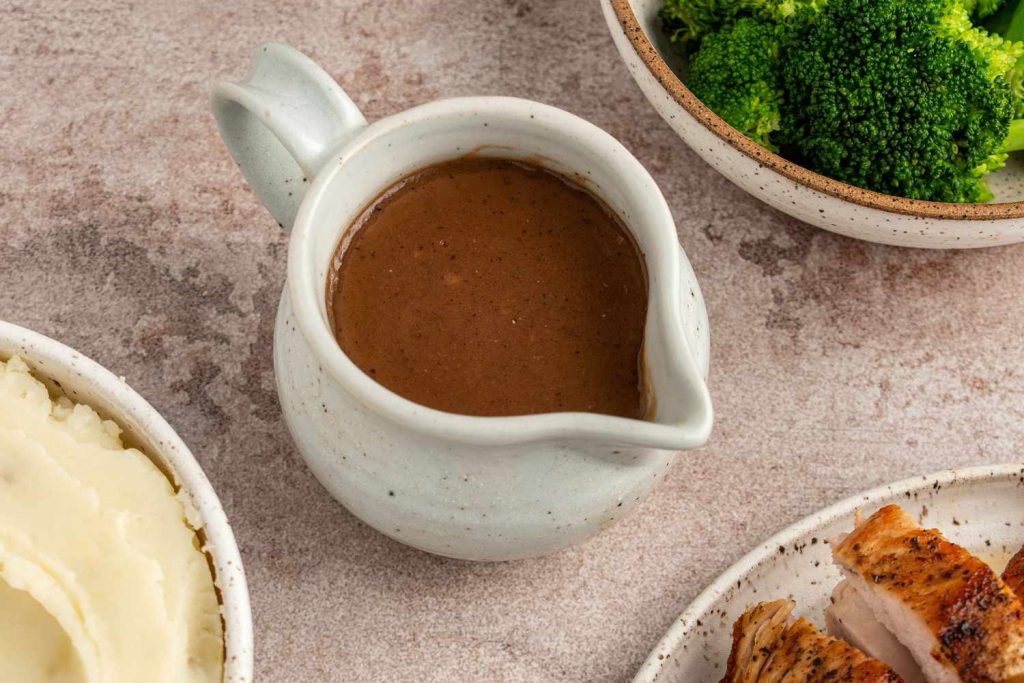Every cook has a special recipe for gravy that they love to make. Whether it’s for a holiday dinner or just a regular meal, gravy is a great way to add flavor and texture to any dish. But the question remains: can you use self-rising flour to make your own gravy? Let’s find out.

Table of Contents
What Is Self-Rising Flour?
Self-rising flour is a combination of all-purpose flour, baking powder, and salt. When these ingredients are combined and moistened with water or milk, they form an airy dough that can be used to make biscuits, cakes, and other baked goods.
This type of flour is very convenient because you don’t have to measure out each individual ingredient when making something like biscuits – simply combine the self-rising flour with liquid, knead it into a dough, and bake!
Can You Use Self-Rising Flour For Gravy?
The simple answer is no – self-rising flour should not be used as an alternative for plain all-purpose flour in gravy recipes.
The reason why is that self-rising flour contains a baking powder which will give your gravy an unpleasant bitter taste that won’t blend well with the other flavors of your dish. In addition, using self-rising flour instead of all-purpose flour could lead to lumps in your gravy which can ruin its texture.
So What Should I Use Instead?
If you want to make homemade gravy, the best option would be to use plain all-purpose flour instead of self-rising.
All-purpose flour does not contain any leavening agents such as baking powder or baking soda so it won’t alter the taste or texture of your final product.
Additionally, all-purpose flour can be used as a thickener in sauces and gravies without having to worry about any off flavors or lumpiness.
Read more:
Does Bread Soak Up Alcohol? Debunking the Soaking Up Alcohol Myth
FAQs
Can you make gravy with olive oil?
Yes, making gravy with olive oil is an interesting and tasty option for cooks who prefer a healthier alternative to traditional fat sources.
Olive oil is packed with healthy monounsaturated fats, antioxidants, and anti-inflammatory properties that make it an excellent choice for sauces and gravies.
Compared to other cooking oils, such as butter or lard, olive oil has a much lower melting temperature, making it easier to incorporate into your favorite sauces and gravies.
To make gravy with olive oil, you will need onions, garlic, vegetable or chicken stock, cornstarch or flour for thickening, seasoned salt and pepper to taste, and of course – olive oil.
- Begin by sautéing the onions and garlic in the oil until softened.
- Add the stock and bring to a simmer, stirring frequently.
- Season with salt and pepper and add the cornstarch or flour to thicken.
- Simmer for 10 minutes and then serve over your favorite meats, potatoes, or vegetables.
Can I use water instead of milk for sausage gravy?
Yes, you can use water instead of milk for sausage gravy.
The water will thin out the gravy and it won’t be as creamy or rich as using milk would be, but it will still have a good flavor and consistency.
You could also try substituting half-and-half or cream for the milk to achieve a more creamy result.
Additionally, you could add a little bit of butter or olive oil to give the gravy some extra flavor.
Experiment with different ingredients and ratios until you find a combination that works best for your particular recipe.
With a little bit of trial and error, you should be able to make delicious sausage gravy using water in place of milk!
How to make homemade pepper gravy?
Making homemade pepper gravy is a great way to add some rich flavor to recipes. This simple recipe will show you how to make a tasty pepper gravy that’s sure to be the star of your dinner table.
- To start, heat butter in a saucepan over medium-high heat until it melts and bubbles.
- Then, add flour and whisk for about 2 minutes until the flour starts to brown.
- Next, add minced garlic and diced bell pepper, cooking for another 3-4 minutes until the vegetables are soft.
- To finish, slowly pour in beef broth while stirring constantly.
- Bring the mixture to a boil and reduce heat to medium-low.
- Simmer for 10 minutes, stirring occasionally, until the mixture is thick and bubbly.
- Season with salt and pepper to taste, serve hot, and enjoy!
This homemade pepper gravy recipe is great for drizzling over mashed potatoes, creamy polenta, or even a juicy steak. You can also experiment with different types of peppers to add some variance in flavor.
Whether you’re looking to spruce up a family dinner or impress guests at a holiday gathering, this flavorful gravy will be sure to please.

Conclusion
In conclusion, if you want to make a delicious homemade gravy then you should not use self-rising flour as an alternative to all-purpose flour in your recipe. Self-rising flour contains leavening agents such as baking powder which will give your finished product an off-flavor and could result in lumpy sauce or gravy. If you want tasty results every time, stick with plain all-purpose flour!
References:








